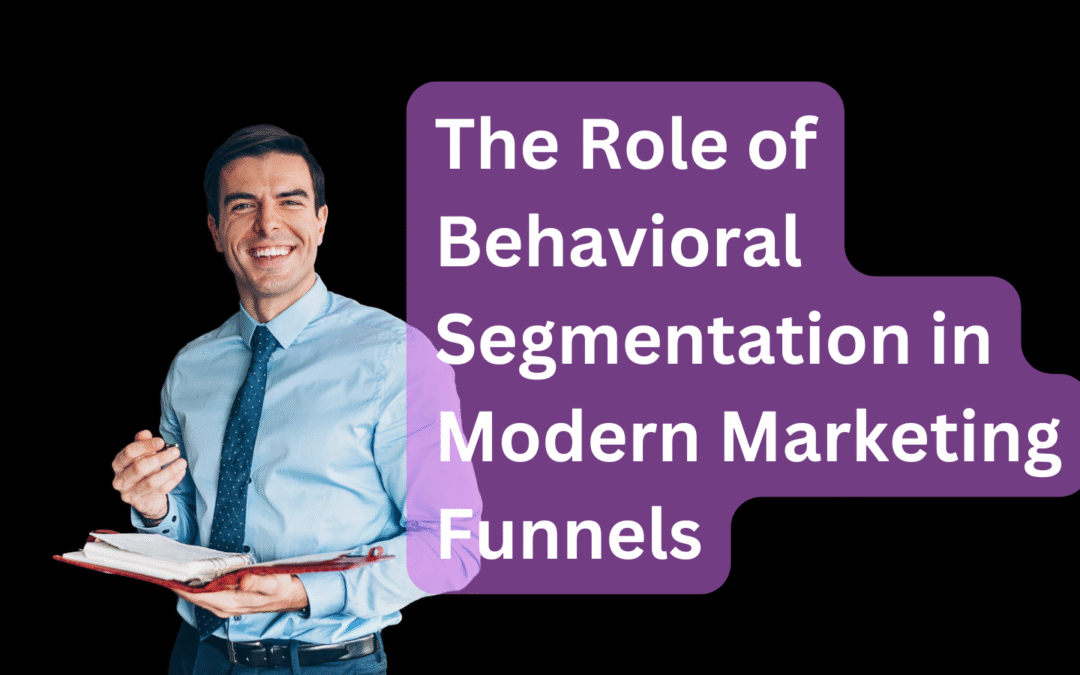- Introduction: Why Behavioural Segmentation Matters in Marketing Funnels 🧩
- Understanding Behavioural Segmentation and Its Benefits 🔍
- Key Types of Behavioural Segmentation in Digital Marketing ⚡
- Integrating Behavioural Segmentation into Your Marketing Funnel 🛠️
- Personalisation Strategies That Drive Conversions 🎯
- Using Automation to Enhance Segmentation Efficiency 🤖
- Measuring the Impact of Behavioural Segmentation 📊
- Challenges and Best Practices ⚠️
- Conclusion: Behavioural Segmentation as a Growth Lever 🚀
- FAQ ❓
- Questions?
Introduction: Why Behavioural Segmentation Matters in Marketing Funnels 🧩
Modern marketing is no longer one-size-fits-all. Behavioural segmentation allows brands to group customers based on actions, preferences, and interactions, making marketing funnels more precise and effective.
Understanding Behavioural Segmentation and Its Benefits 🔍
By analysing user behaviour, marketers can identify patterns such as frequent purchases, content consumption, or engagement with campaigns. This insight helps tailor messaging, increasing funnel efficiency and reducing drop-offs.
Key Types of Behavioural Segmentation in Digital Marketing ⚡
Marketers often segment audiences by purchase history, website interactions, email engagement, and social media activity. Each type provides actionable insights for optimising conversion pathways.
Integrating Behavioural Segmentation into Your Marketing Funnel 🛠️
To implement behavioural segmentation, track key touchpoints across your funnel. Use analytics tools, CRM data, and marketing automation to dynamically serve content that matches user behaviour.
Personalisation Strategies That Drive Conversions 🎯
Once segments are defined, create personalised offers, emails, or content recommendations. Tailored messaging increases engagement, encourages action, and strengthens the bottom of your funnel.
Using Automation to Enhance Segmentation Efficiency 🤖
Marketing automation tools can trigger campaigns based on behaviour, such as cart abandonment or content downloads, allowing teams to scale behavioural marketing without losing personalisation.
Measuring the Impact of Behavioural Segmentation 📊
Track conversion rates, average order value, and engagement metrics for each segment. Continuous monitoring enables optimisation and ensures your marketing funnel performs at peak efficiency.
Challenges and Best Practices ⚠️
Collecting accurate behavioural data, maintaining privacy compliance, and avoiding over-segmentation are key challenges. Focus on relevant data, clear objectives, and iterative testing.
Conclusion: Behavioural Segmentation as a Growth Lever 🚀
Incorporating behavioural segmentation transforms marketing funnels into adaptive, data-driven systems. It’s a must for modern marketers seeking higher conversions and better ROI.
FAQ ❓
Q: What is behavioural segmentation?
A: Grouping customers based on actions, preferences, and interactions rather than demographics.
Q: How does behavioural segmentation improve funnels?
A: It allows personalised messaging, reducing drop-offs and boosting conversions.
Q: Can small businesses use behavioural segmentation?
A: Yes, even basic analytics and CRM data can provide actionable behavioural insights.

AUTHOR
Tomasz Jóźwiak
Growth Marketing Strategist | Founder at Webomo
I'm Tomasz Jóźwiak, a growth marketing strategist and the founder of Webomo. Over the past decade, I’ve helped startups, scale-ups, and established brands drive measurable growth through full-funnel strategies, performance marketing, and conversion optimization.
I believe in data-driven experimentation, fast execution, and full transparency—because real growth is about more than just vanity metrics.
👉 Let’s connect on LinkedIn or check out Webomo’s growth marketing work.

Fueling Growth with Strategy
Questions?
Ask any question about identifying new growth opportunities for your company.
